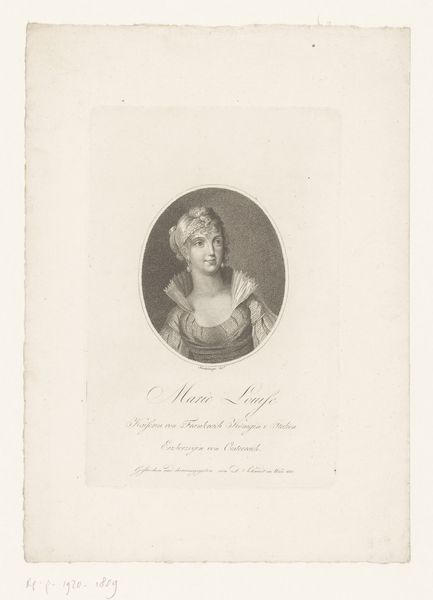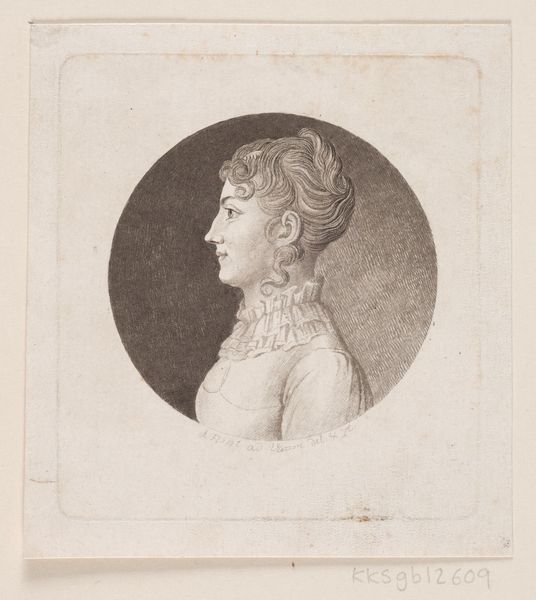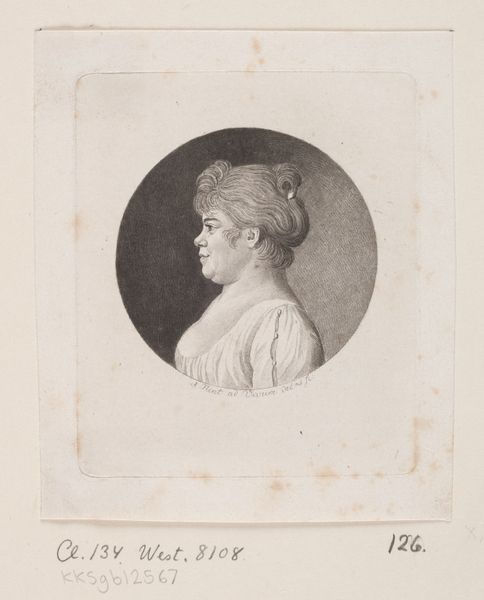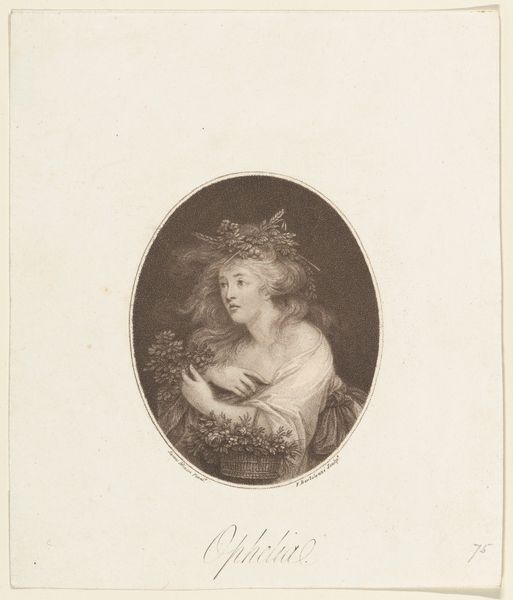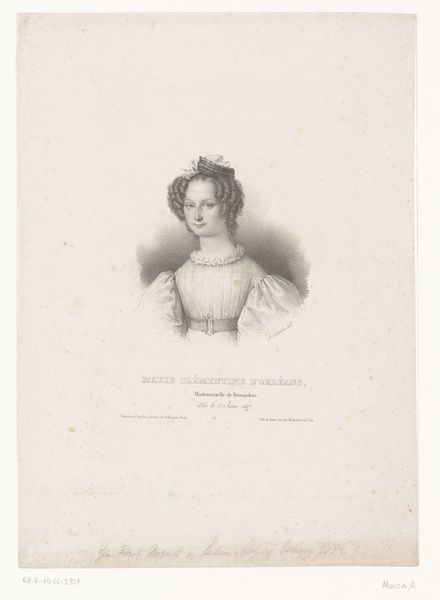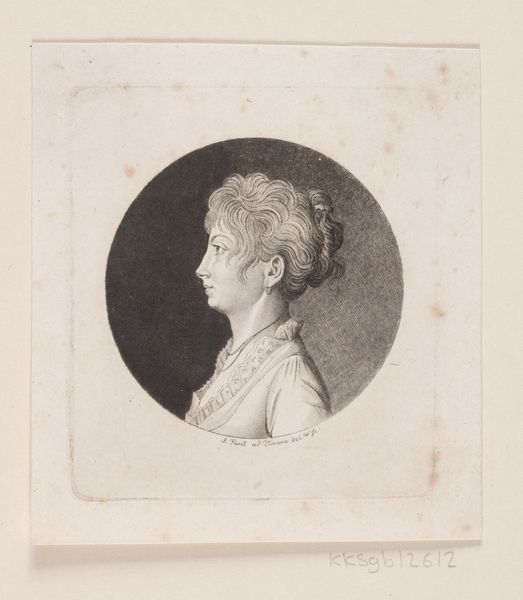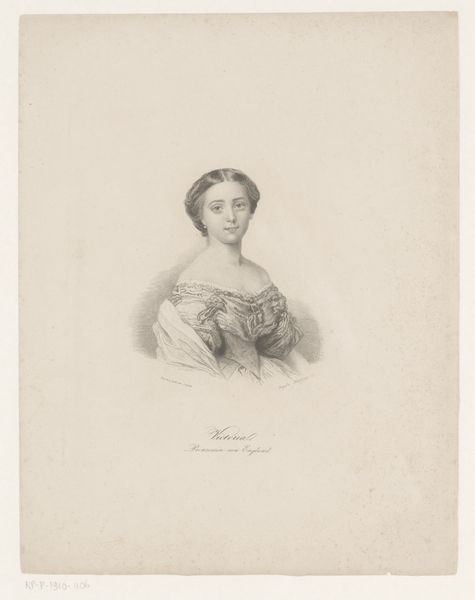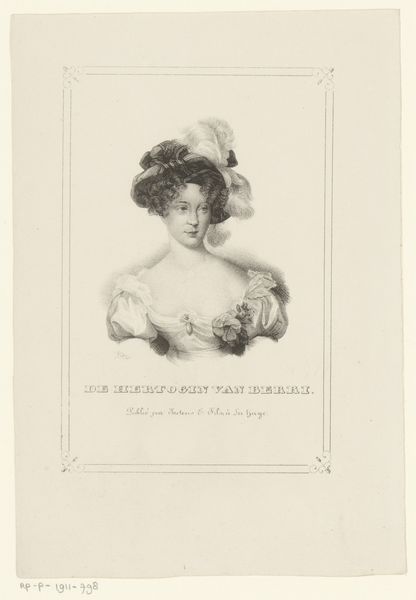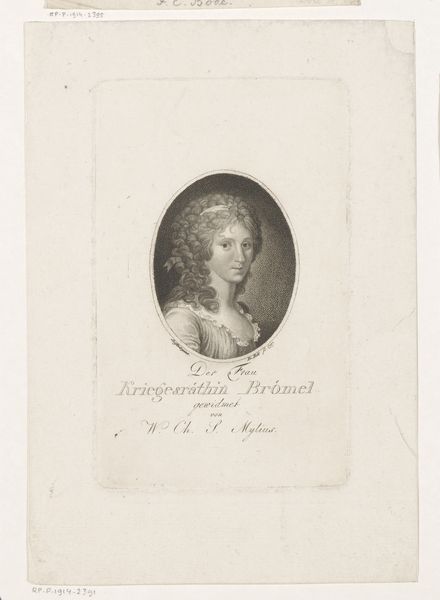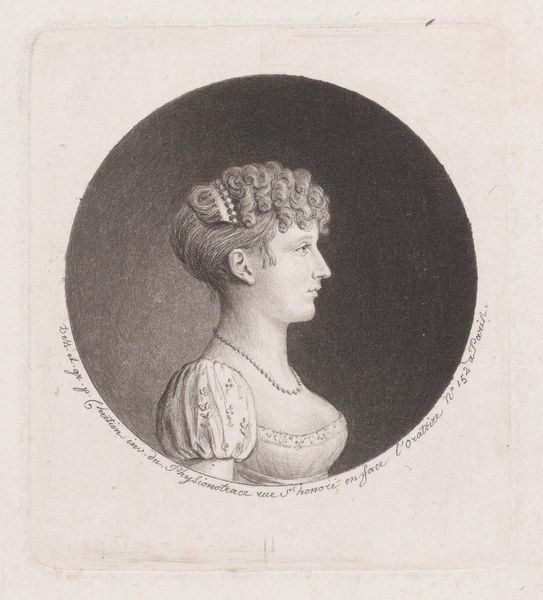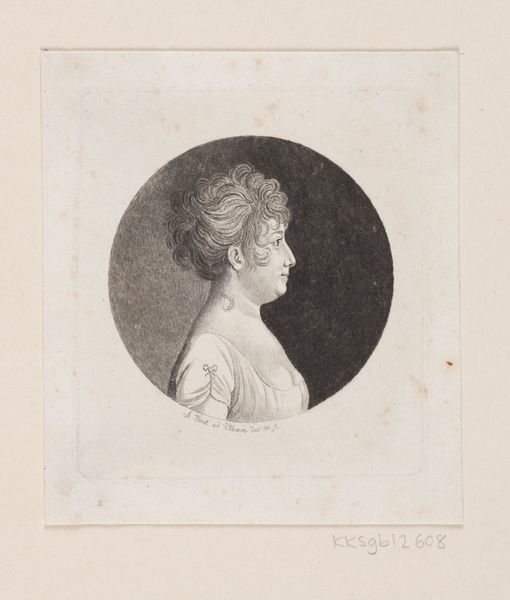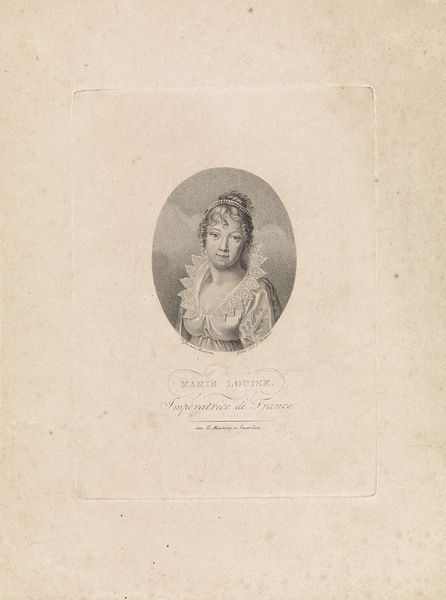
watercolor
#
neoclacissism
#
watercolor
#
watercolour illustration
#
academic-art
#
watercolor
Dimensions: height 249 mm, width 201 mm
Copyright: Rijks Museum: Open Domain
Curator: This watercolor portrait, titled "Portret van Marie Antoinette," was crafted in 1791 by Louis Charles Ruotte. It currently resides here at the Rijksmuseum. Editor: My first impression is one of surprising intimacy and almost...melancholy. The soft watercolor tones, the simple headdress – it feels very different from the extravagant images usually associated with Marie Antoinette. Curator: Precisely! Context is key here. It was painted at a turning point, 1791, when the French Revolution was in full swing. Royalty needed to present a humbler image. Editor: That humble image, I see it in her slightly downturned gaze. Oval portraits such as this were historically signs of respect and reverence for their subjects but here the portrait serves as a kind of prison, framing her in an enclosed form. Curator: The piece definitely speaks to a specific political strategy to rebrand and retain some popular support. Academic-art style demanded simplicity of composition and execution. The oval enforces her high status, with the soft watercolor medium designed to appeal to viewers by emphasizing humility and, therefore, forgiveness. Editor: Though simple in execution, Ruotte is still carefully managing what she conveys, even in apparent meekness. The symbols associated with the Royal Family, though stripped back, are visible for the trained eye. She still signals to wealth and status even within a simple, almost mournful state. Curator: The piece gained prominence in part due to the democratization of print media. These works could circulate to multiple audiences and at high volume through print. Editor: Knowing the tumultuous era during which it was created only adds another layer. Watercolors and illustration were easily transportable, thus an accessible reminder. Despite its delicate beauty, I’m seeing this portrait not just as a depiction of a queen, but as a powerful visual response to a nation’s evolving cultural sentiment. Curator: Absolutely. The art becomes a tool. Editor: A haunting reminder of the intersection between image, power, and revolution. Thank you. Curator: Indeed. A moment frozen in a wash of delicate color.
Comments
No comments
Be the first to comment and join the conversation on the ultimate creative platform.
